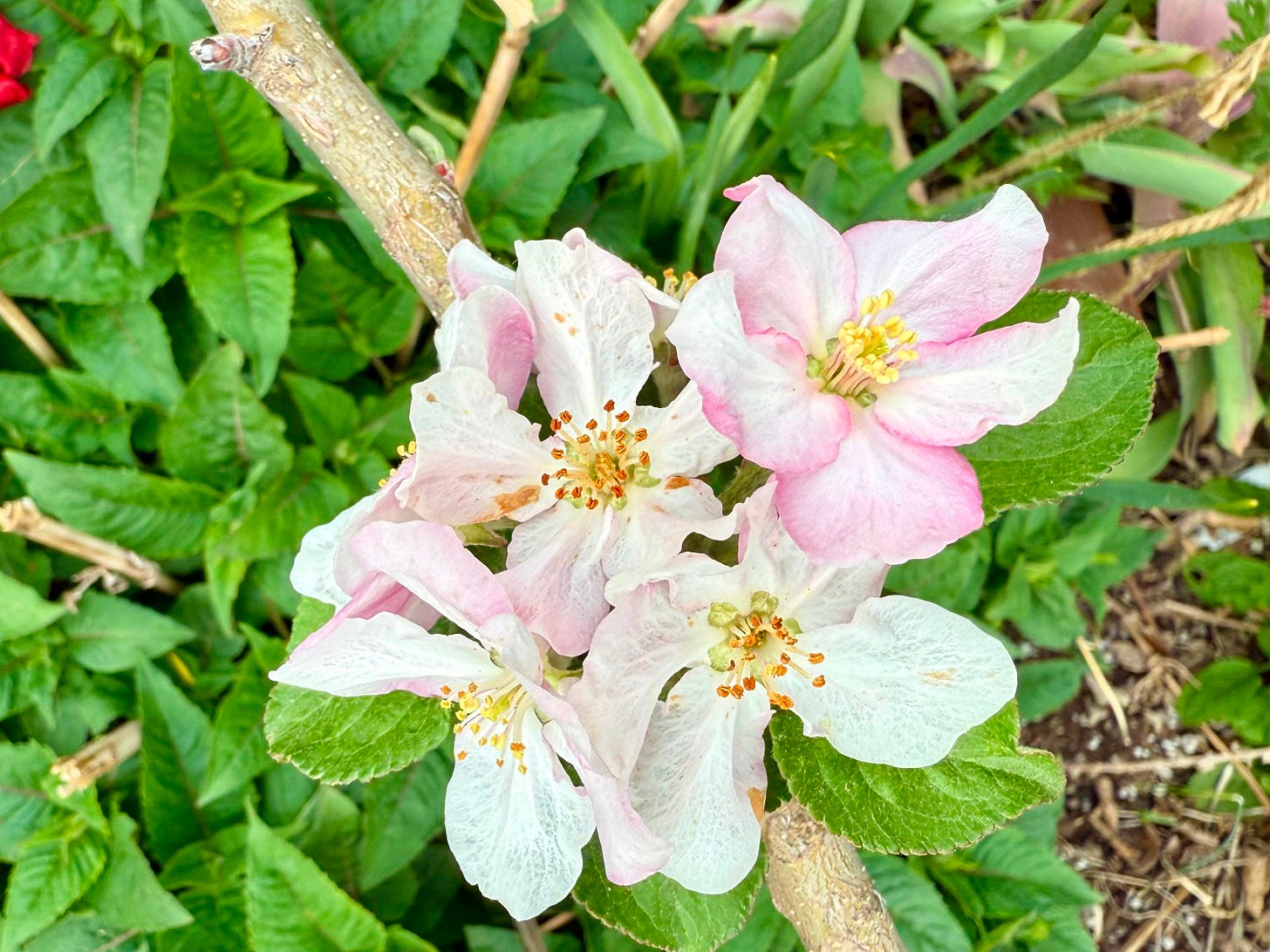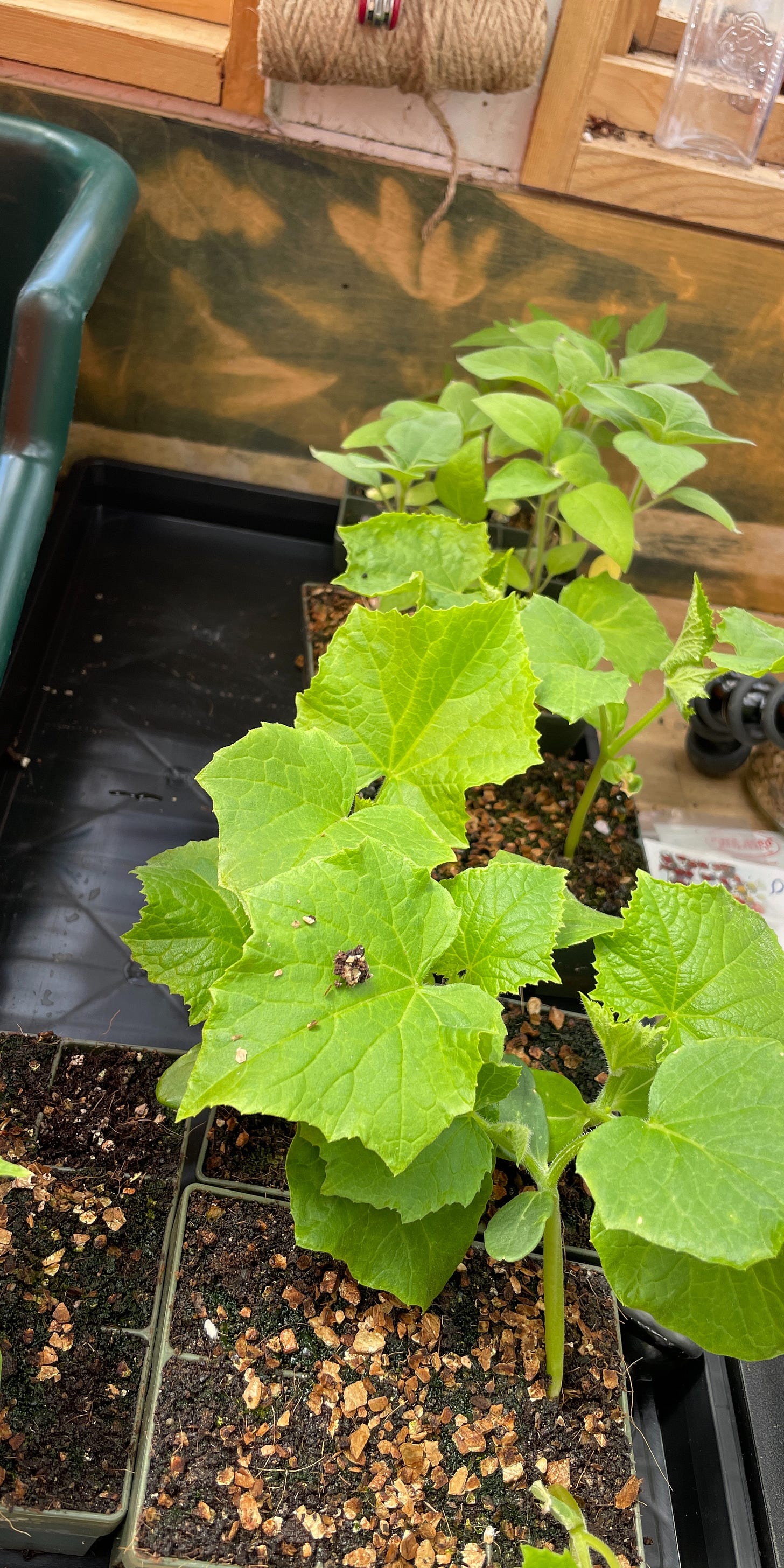Thank you to each of you who provided feedback about the first few months of this substack! I’m incorporating a lot of that feedback into what we will do going forward starting with a MONTHLY checklist — rather than weekly. So, let’s get started!
Ok, now! Everyone who was in high school chorus, sing along!
Now is the month of maying,
When merry lads are playing, fa la,
Each with his bonny lass
Upon the greeny grass. Fa la.
The Spring, clad all in gladness,
Doth laugh at Winter's sadness, fa la,
And to the bagpipe's sound
The nymphs tread out their ground. Fa la.
Fie then! why sit we musing,
Youth's sweet delight refusing? Fa la.
Say, dainty nymphs, and speak,
Shall we play barley-break? Fa la.
Thomas Morley
Happy May! Spring is in full swing, and by the end of the month, most of North America will be safely past the risk of frost. That means it’s officially time to dig in—literally. These longer, warmer days are perfect for getting your hands dirty and embracing all the beauty and productivity this season offers.
Whether you’re a seasoned gardener or just starting out, here’s your essential May gardening checklist to make the most of this vibrant time of year.
Prioritize Native Plants
When you visit your local nursery this month, make a beeline for the native plants section. Plants that are indigenous to your region require less water and maintenance, making them ideal for sustainable gardening. Even better? They play a crucial role in supporting local wildlife—especially native bees and butterflies.
Many of these pollinators rely on dwindling populations of specific plants to reproduce. By choosing native flora, you're not just planting a garden; you're helping rebuild a healthy local ecosystem.
Need ideas about what to plant, check out the Plant of the Week section!
Keep Sowing Lettuce for Continuous Harvest
For fresh salads all summer long, keep sowing lettuce seeds every couple of weeks. You can start them in seed trays or do what I often do: scatter seeds for "cut-and-come-again" varieties (also called baby lettuces) in empty garden spots. This approach takes minimal effort and rewards you with a steady stream of greens from now through fall.
Be Patient with Tomatoes, Cucumbers, & Peppers
If temperatures in your area aren’t quite warm enough yet, don’t rush your tomatoes, cucumbers, or peppers into the ground. Instead, pot them up to give their roots room to expand and support their rapid growth. Use a larger pot filled with peat-free compost and plant them deep—up to their first true leaves.
Here’s a pro tip: tomatoes will sprout extra roots along buried stems, making your plants stronger and more resilient in the long run.
Need more information about growing tomatoes? Check out my Tomato Growing Guide!
Start Composting (If You Haven’t Yet)
Let this be the year you finally start composting—especially if you don’t have access to curbside waste collection. An open compost bin or pile works great in many climates, while a lidded hot bin is ideal for colder areas.
Composting is a simple, effective way to close the loop and return food and yard waste nutrients back to your soil—rather than letting them end up in a landfill.
Add Annuals for Summer Color
Once your last frost date has passed, it’s safe to bring some seasonal flair to your garden with annuals. Petunias and nasturtiums are great choices, especially along the edges of raised beds where they’ll spill beautifully onto pathways.
I usually pick up a few from the garden center for an instant pop of color while waiting for my perennials to fill in.
However, be careful that you aren’t suckered into planting perennials as annuals — an easy thing to do, especially at big box stores. Check out this Resistance Gardening Tip for more: Don’t Grow Perennials as Annuals.
Debud First-Year Peonies
Planted peonies recently? Here’s a tough-love tip: debudding them in their first year is essential. Flowering takes a lot of energy, and since peonies are long-lived, it's better to let them channel that energy into establishing strong roots.
You can leave one bud to see what it’ll look like, but remove the rest with a clean pair of secateurs. Trust me—it’s worth the patience.
It’s the merry month of May, and there's no better time to be outside. Gardening nourishes the mind, body, and spirit, so embrace every moment you can in the sun.
Got questions about your garden? Drop them in the comments—I’d love to help. And don’t forget to like and subscribe for more gardening tips throughout the season.
Happy gardening!
Angela












This is an amazing substack so far. Thank you for sharing your expertise with us! I am an American living in Austria (USDA hardiness zone 6ish, maybe?) and I have these beautiful, old concrete planters throughout our garden left by the previous owners. I have no idea what to do with them, but after seeing your post on annuals, I became more open to potentially planting some there. Do you have any other suggestions for something like this? Thank you!!!
I am determined to grow my own cucumbers this year and one little seedling survived so far but doesn’t seem to be growing. I didn’t know you’re supposed to plant up to the leaves so will try that, thanks for the tip!